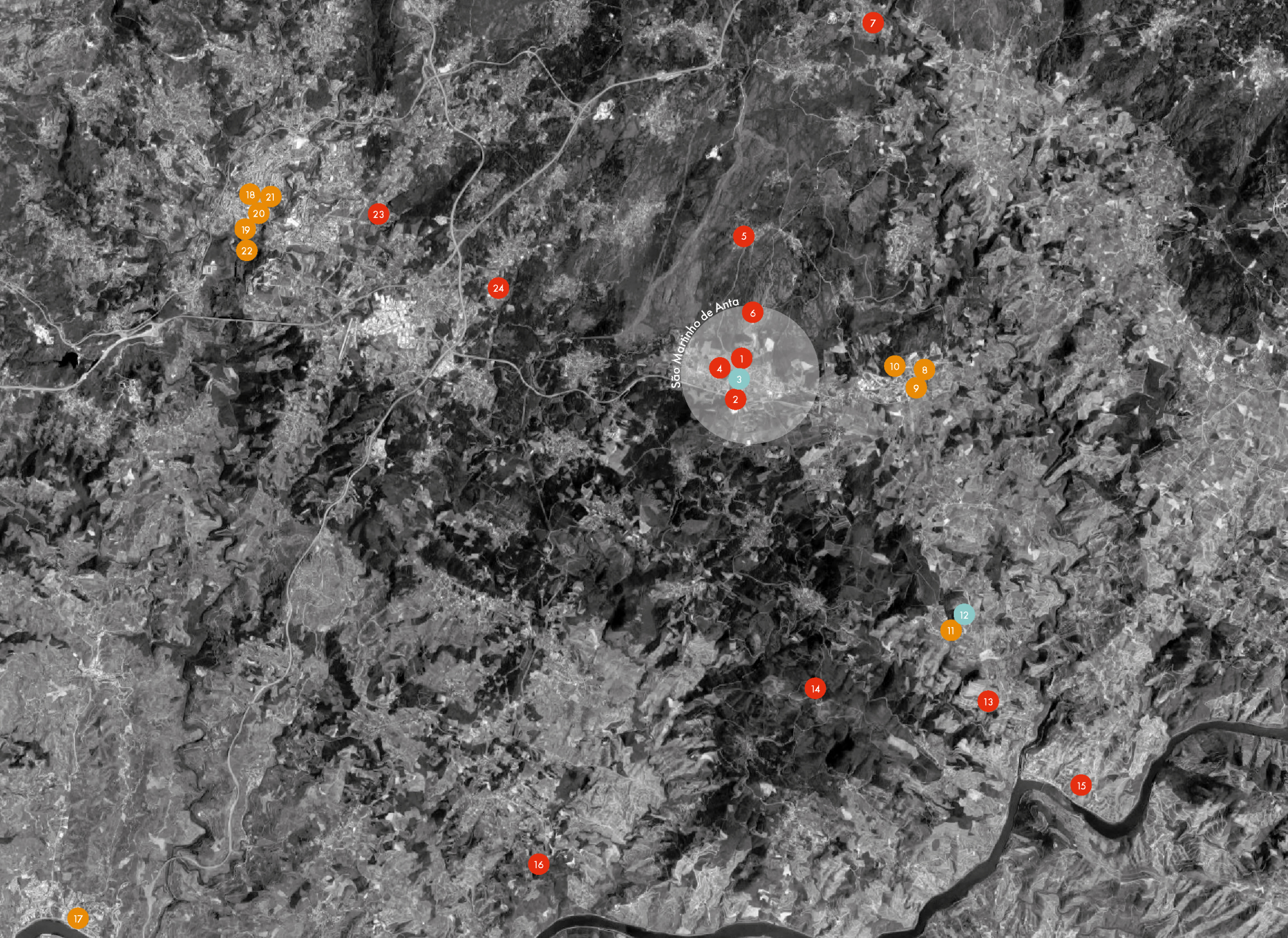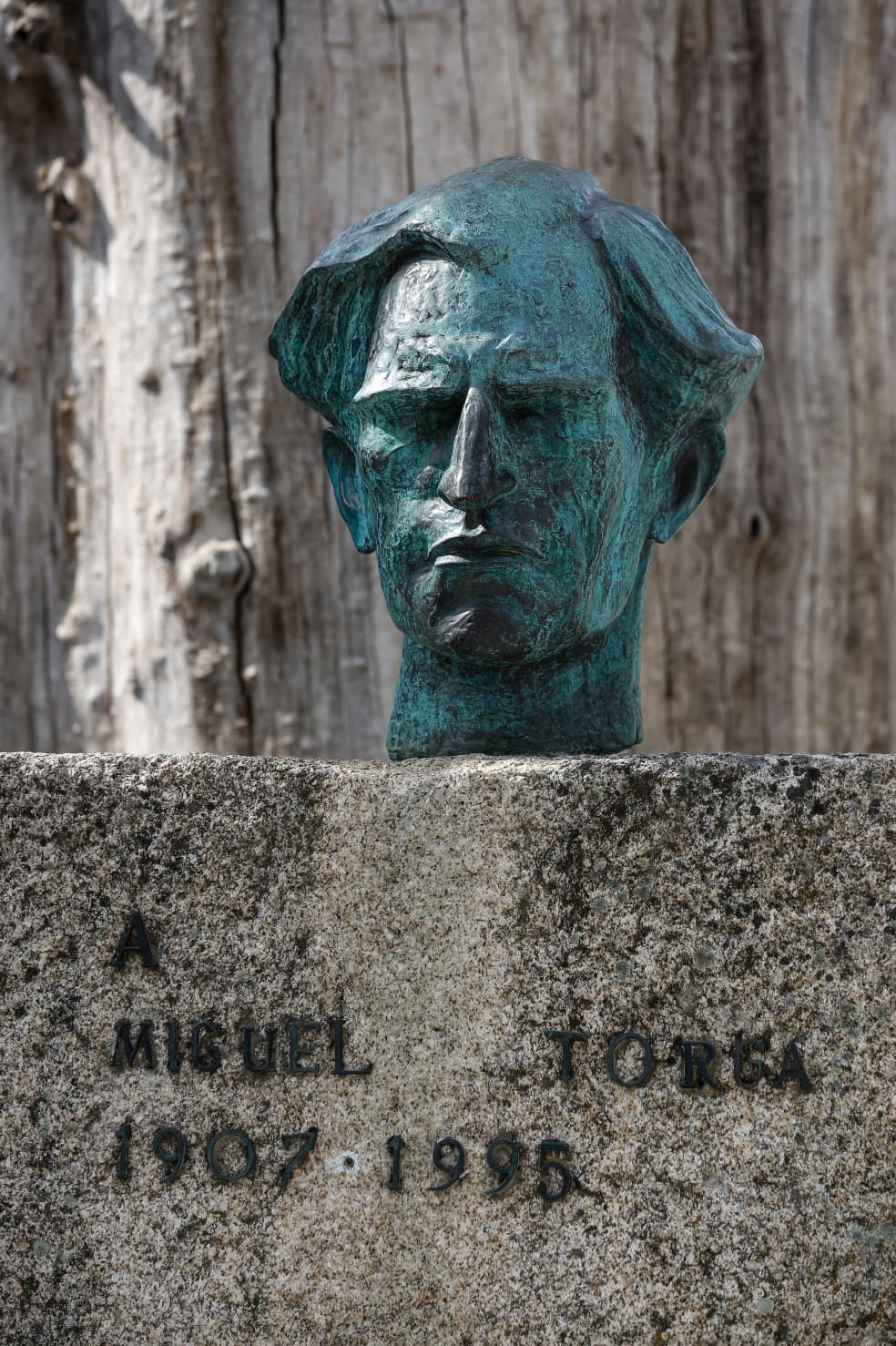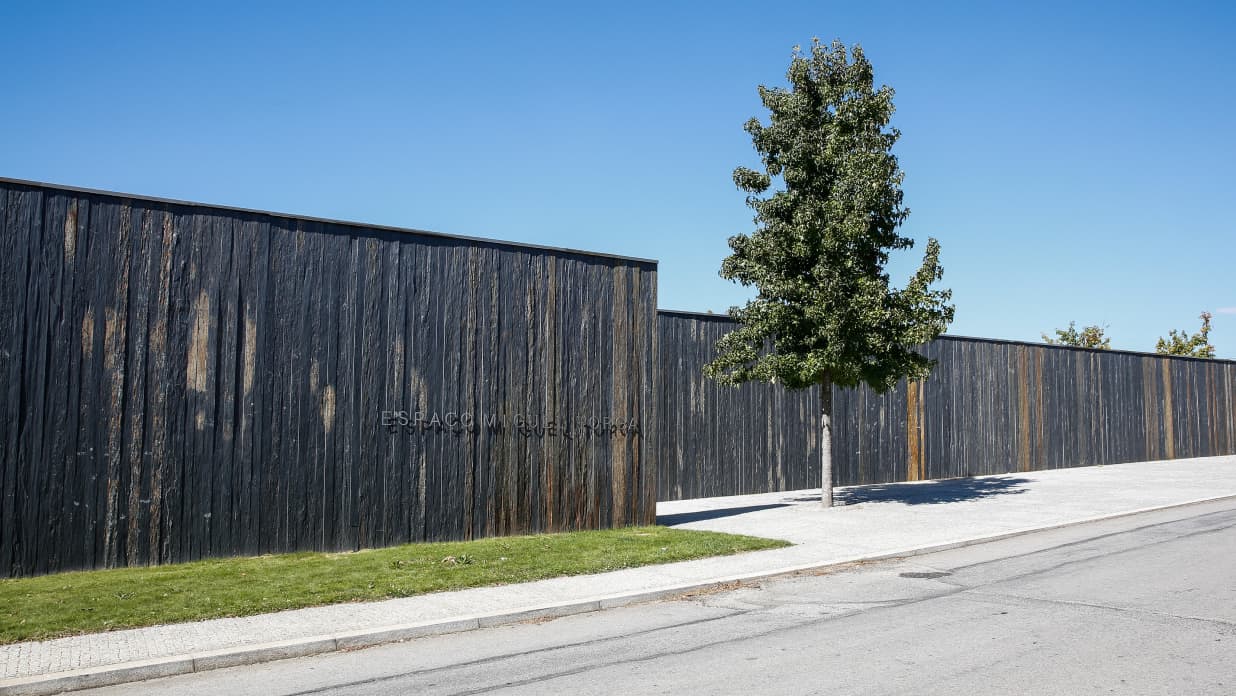São Martinho de Anta, December 28, 1953 It's a pity that mountains don't speak, don't dialogue or testify. These mine, at least. Besides the emotion of hearing them respond to the monologue that the silence in which they live erased from my lips and made interior, I would especially like to know if the indelible mark of each of our encounters remains in their soul, as in mine. The embrace we give is so tight and medullary, so intimate the communion that unites us for hours on end, that I don't resign myself to the idea that only on my side there is consciousness, and on the other the love is passive.
Diary VII But I could never live outside it as a writer. I lacked the dictionary of the earth, the grammar of the landscape, the Holy Spirit of the people.
A Criação do MundoThe starting point
The writer's village, where he was born and where he is buried in a flat grave, granite, with a torga. Starting point for a weekend or longer walk. When you want, how you want, for as long as you want.
Many itineraries are possible from this village that became a town and that embraces the Transmontan landscapes. The Espaço Miguel Torga, by architect Souto Moura, is a cultural facility with a permanent exhibition about the life and work of Miguel Torga, a temporary exhibition room and an auditorium where lectures, concerts and recitals are regularly held. Right next door, five minutes on foot, the door of Casa Miguel Torga opens to welcome visitors: the entrance hall with decorative weapons and the beret, the living room, the fireplace and the armchair where the author sat and wrote, first editions, photographs and manuscripts, translations in several languages, works by Andrée Rocha and Clara Rocha.
Outdoors, the sky, the smell of earth, the landscape that grabs the colors of time, stone, granite. The Passos de Torga is a trail that starts from Casa Miguel Torga and ends at Eirô, the square of São Martinho de Anta. In the center of the town there used to be a negrilho (the popular name for the black elm), the centenary tree to which the author dedicated the poem "A um Negrilho". The trail is an 11-kilometer circular walk that breathes nature, shrubs, pines and holm oaks, gorse, white brooms and rosemary.
The primary school with windows overlooking the Marão, evoked in the first pages of A Criação do Mundo, and where, years later, the poet spent an afternoon replanting the mimosas of his childhood. In the village of Garganta, another old school whose building is now the Archaeological Center of Garganta, a facility that preserves some archaeological remains collected in the Necropolis of Touças and in the mamoa of Madorras, both worth a visit.
At the top of the mountain, with the Marão and Alvão in view, is the Senhora da Azinheira, with its porch that recalls the setting of the story "Natal". White, simple chapel, from the 17th century, baroque altarpiece with gilded carving. The bell, the chestnut trees around, the old fountain, the smell of rosemary, the pilgrimage of August 15, the rocks that become picnic tables for a day.
A few kilometers away, in the village of Parada de Pinhão, is Casa Aires Torres. The life and work of Aires Torres, poet, actor, military and revolutionary. The permanent exhibition room shows biographical panels, personal objects and part of his library. In Sabrosa, it's worth visiting the castro, dated from the Iron Age and later occupied by the Romans. Also noteworthy are the Mother Church, from the 18th century, in baroque style, Casa da Capela and Casa da Pereira, where, according to tradition, Fernão de Magalhães would have been born. The great circumnavigation journey is told in the exhibition Locais e Culturas da Viagem de Magalhães, at Parque BB King, in Sabrosa, which allows you to experience the odyssey and discover distant territories.



